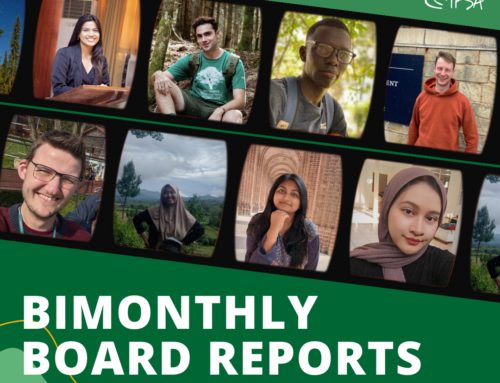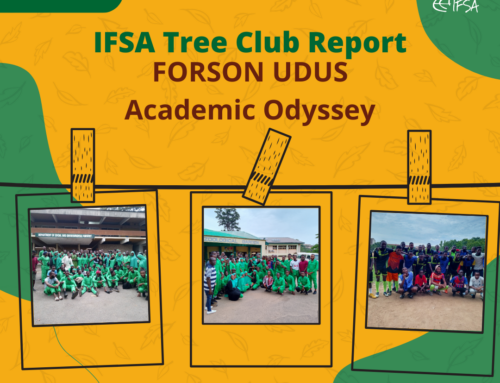by Angélica Lizbeth Alcántara Sánchez
[caption id="attachment_1360" align="aligncenter" width="325"]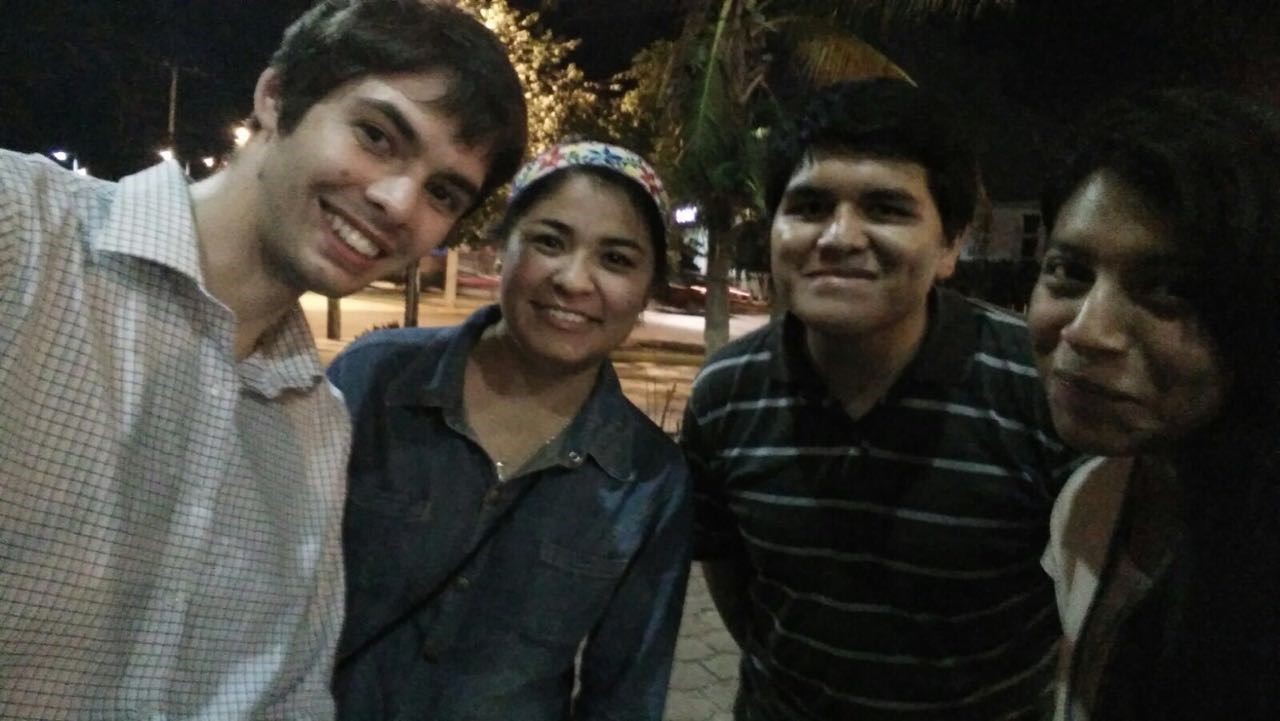 IFSA Delegates at Cop 13 in Cancun, México, December 2016.[/caption]
Cancun was the place where COP 13 took place, where different actors and managers of biological diversity, who are involved in all the world. It was amazing to see in a single place people from all over the world, with different customs, traits, ways of thinking, different realities, more incredible that all they came together to talk about a subject that concerns us all, a subject that is indistinct in race , Skin color, economic level: biodiversity, which is implicit in everyone and everything
[caption id="attachment_1356" align="alignleft" width="317"]
IFSA Delegates at Cop 13 in Cancun, México, December 2016.[/caption]
Cancun was the place where COP 13 took place, where different actors and managers of biological diversity, who are involved in all the world. It was amazing to see in a single place people from all over the world, with different customs, traits, ways of thinking, different realities, more incredible that all they came together to talk about a subject that concerns us all, a subject that is indistinct in race , Skin color, economic level: biodiversity, which is implicit in everyone and everything
[caption id="attachment_1356" align="alignleft" width="317"]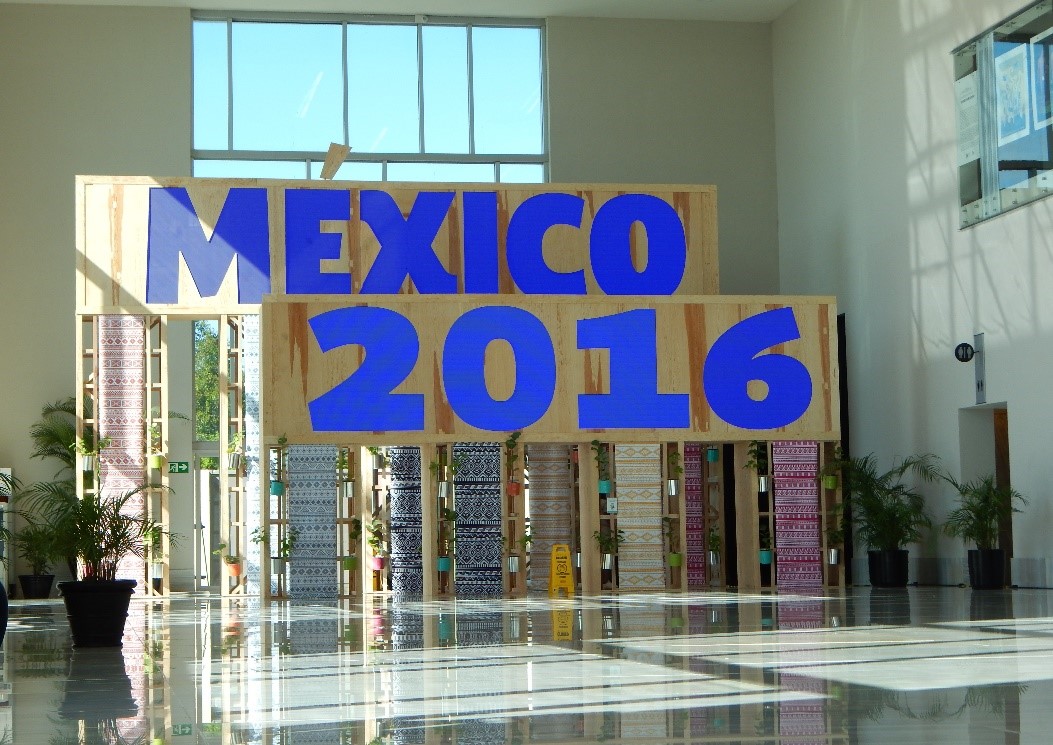 Moon Palace Cancún, Meeting place to COP 13, December 2016.[/caption]
During the events, indigenous peoples and their role in biodiversity were a very frequent issue and of the most important, because that is it, they are the ones who first use natural resources, and have preserved the ancestral knowledge that our ancestors had on Mother Nature, which was important to take in a serious way, they also did Science in some way and much more importantly, they are also possessors of these lands where most of the biodiversity is found.
[caption id="attachment_1357" align="alignright" width="381"]
Moon Palace Cancún, Meeting place to COP 13, December 2016.[/caption]
During the events, indigenous peoples and their role in biodiversity were a very frequent issue and of the most important, because that is it, they are the ones who first use natural resources, and have preserved the ancestral knowledge that our ancestors had on Mother Nature, which was important to take in a serious way, they also did Science in some way and much more importantly, they are also possessors of these lands where most of the biodiversity is found.
[caption id="attachment_1357" align="alignright" width="381"]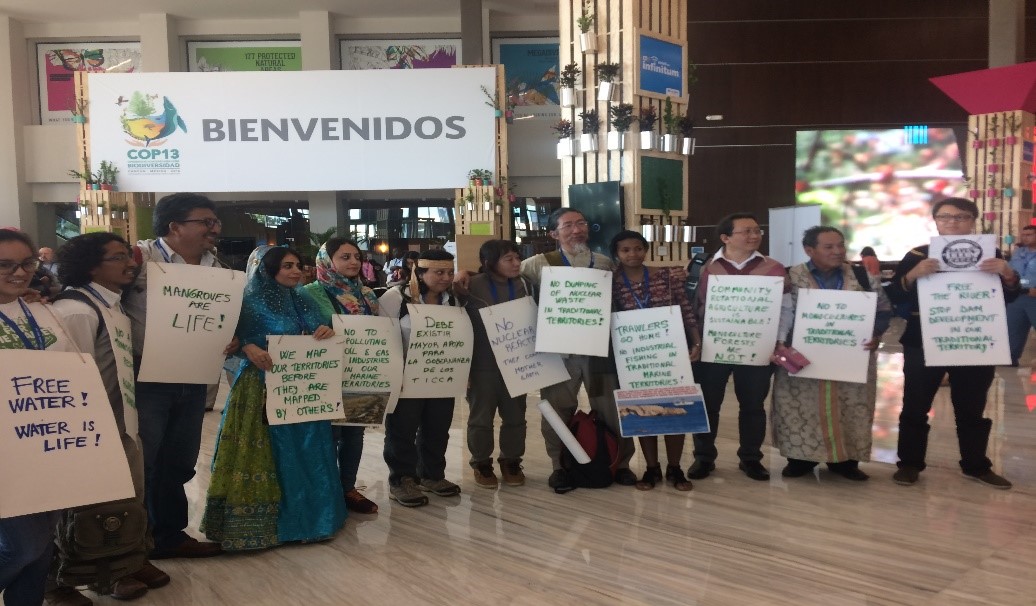 Manifestation of indigenous people at COP 13[/caption]
One of the important messages is that biodiversity must be managed in an integral way, in many parallel events we talked about the sustainable and integral management of natural resources, from the perspective of protected natural areas, for example the goal Aichi 11 (At least the 17% Of terrestrial and continental areas, and 10% of marine and coastal areas have to be preserved). Good examples were given in the Rio Pavilion, where some representatives of national governments gave the progress of their work, also institutions such as the International Union for Conservation of Nature (IUCN).
[caption id="attachment_1358" align="alignright" width="329"]
Manifestation of indigenous people at COP 13[/caption]
One of the important messages is that biodiversity must be managed in an integral way, in many parallel events we talked about the sustainable and integral management of natural resources, from the perspective of protected natural areas, for example the goal Aichi 11 (At least the 17% Of terrestrial and continental areas, and 10% of marine and coastal areas have to be preserved). Good examples were given in the Rio Pavilion, where some representatives of national governments gave the progress of their work, also institutions such as the International Union for Conservation of Nature (IUCN).
[caption id="attachment_1358" align="alignright" width="329"]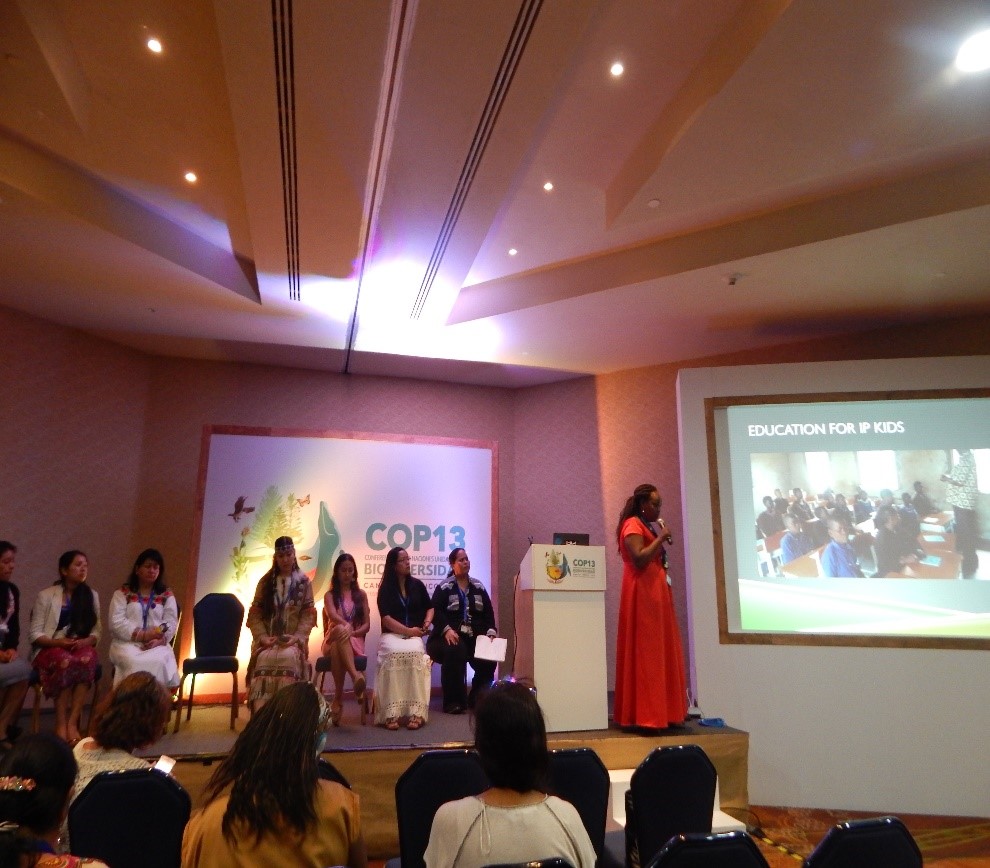 Indigenous women participation in side event.[/caption]
Seeking gender equality, the voice of women also became present in the parallel events, mainly the voice of indigenous women in different parts of the world, the contribution they make in their role as women, knowledge bearers and Of project promoters who seek the integration of indigenous communities in their communities. The indigenous and non-indigenous women is a very important actor, because it was also possible to see many women ministers participating during the side events and in the plenary sessions.
During the COP13 as a delegate one is involved in biodiversity issues, different perspectives, lines of action and work, the role of government, society, nongovernmental organizations, and more important for us, the Different youth organizations working on biodiversity issues. We are the young people who are acquiring more responsibility and commitment. It is good and the right of every citizen to know what governments are doing on this issue (and in others), the actions implemented and to implement, the commitments adopted by each nation and the progress that they have or are missing to achieve, This gives us the chance to work on projects that are positive for biodiversity, it is a good way to get involved with our governments, people and biodiversity to develop us in the professional way. I am sure we can all do something for the use, management and conservation of biodiversity, from small actions, that impact on our own life, from which arise the reactions in chain.
[caption id="attachment_1359" align="alignnone" width="382"]
Indigenous women participation in side event.[/caption]
Seeking gender equality, the voice of women also became present in the parallel events, mainly the voice of indigenous women in different parts of the world, the contribution they make in their role as women, knowledge bearers and Of project promoters who seek the integration of indigenous communities in their communities. The indigenous and non-indigenous women is a very important actor, because it was also possible to see many women ministers participating during the side events and in the plenary sessions.
During the COP13 as a delegate one is involved in biodiversity issues, different perspectives, lines of action and work, the role of government, society, nongovernmental organizations, and more important for us, the Different youth organizations working on biodiversity issues. We are the young people who are acquiring more responsibility and commitment. It is good and the right of every citizen to know what governments are doing on this issue (and in others), the actions implemented and to implement, the commitments adopted by each nation and the progress that they have or are missing to achieve, This gives us the chance to work on projects that are positive for biodiversity, it is a good way to get involved with our governments, people and biodiversity to develop us in the professional way. I am sure we can all do something for the use, management and conservation of biodiversity, from small actions, that impact on our own life, from which arise the reactions in chain.
[caption id="attachment_1359" align="alignnone" width="382"]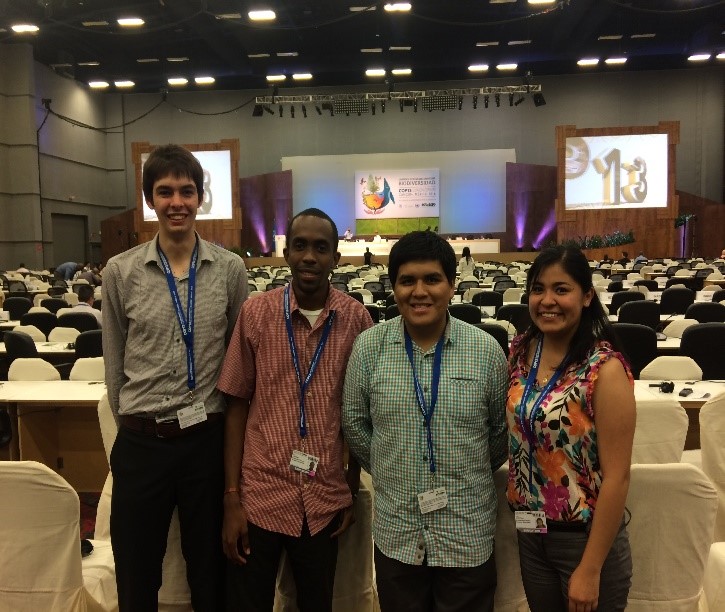 Our delegates at CBD[/caption]
IFSA Delegates at Cop 13 in Cancun, México, December 2016.]]>
Our delegates at CBD[/caption]
IFSA Delegates at Cop 13 in Cancun, México, December 2016.]]>

